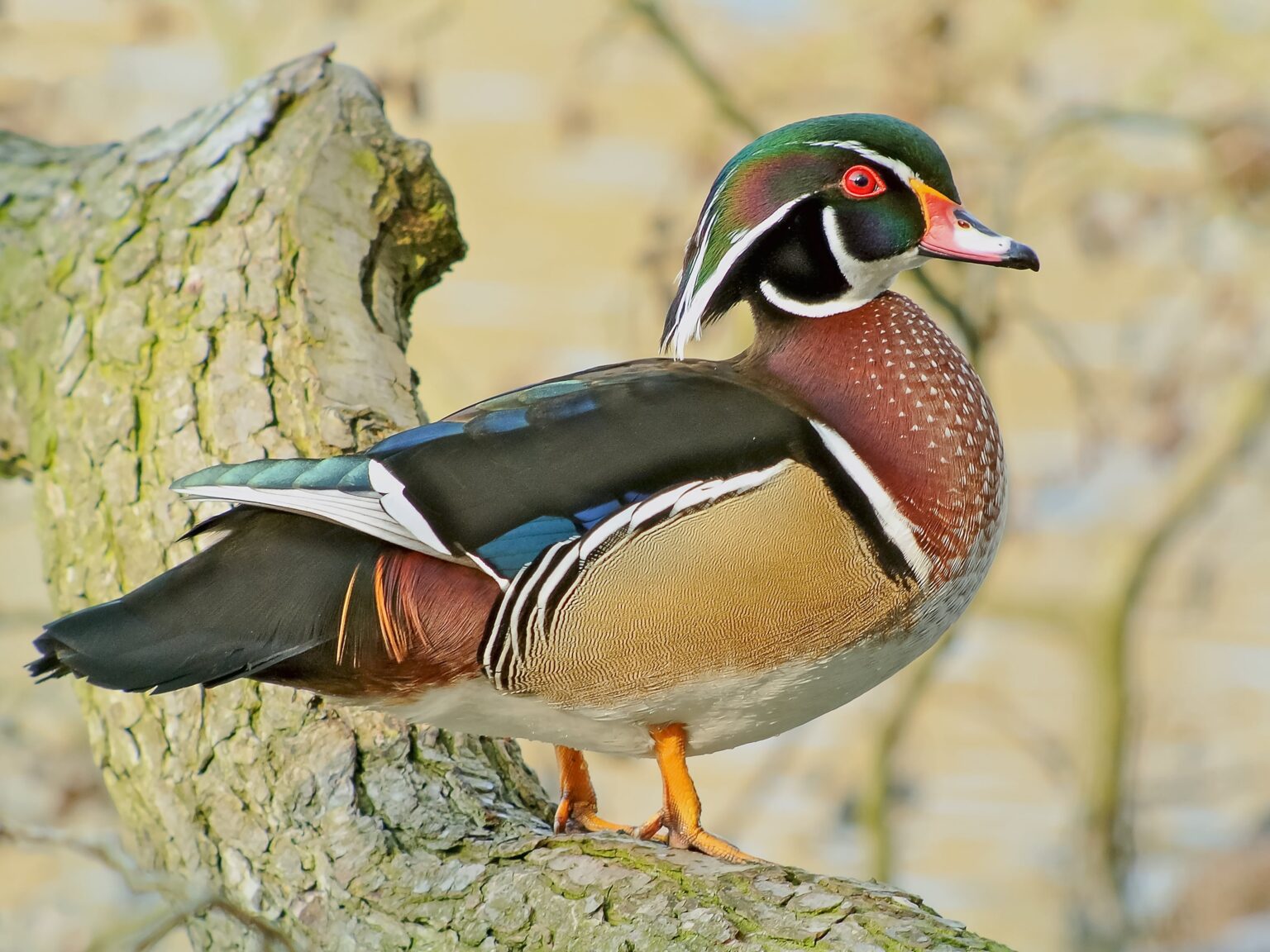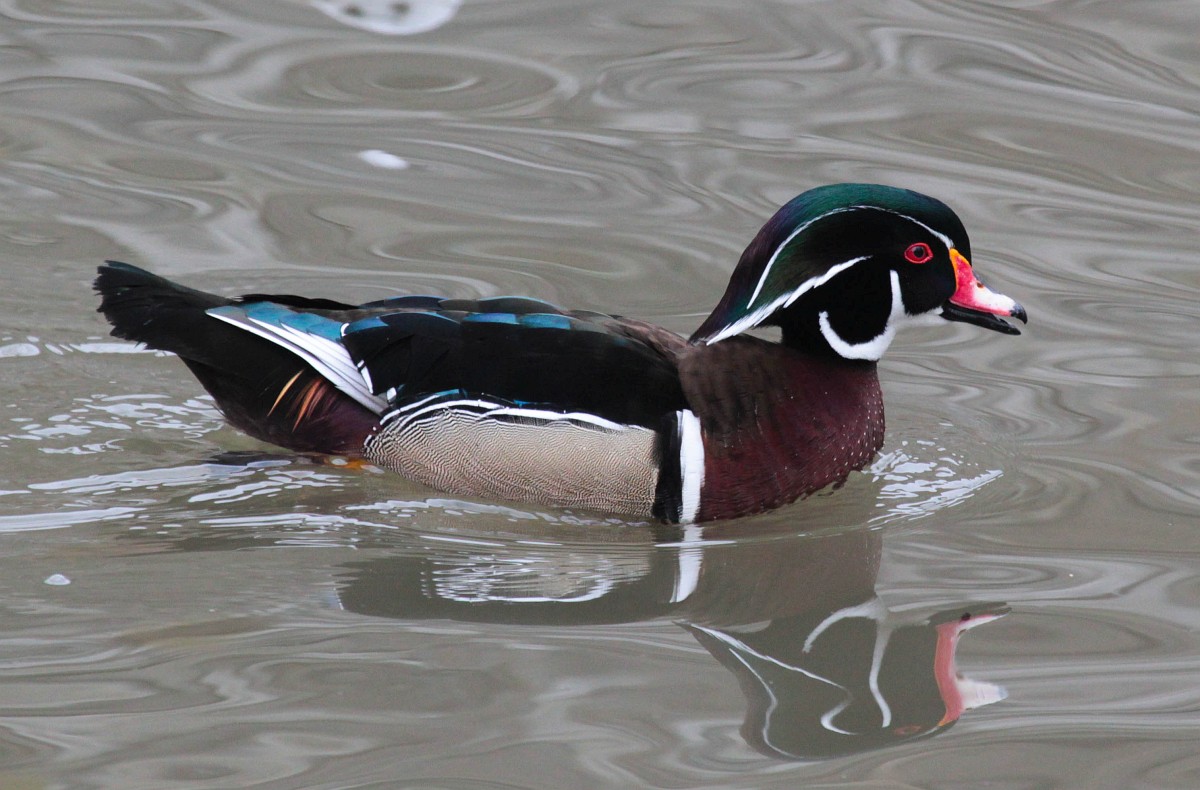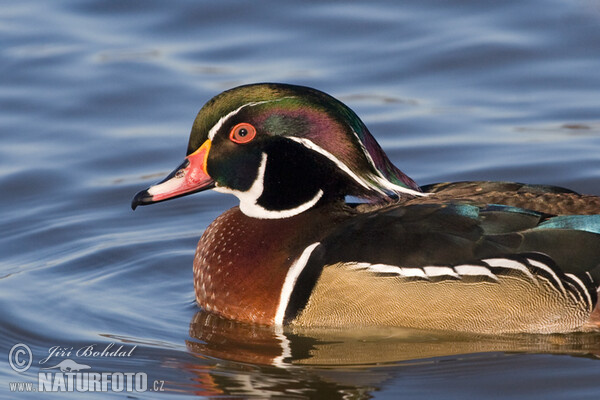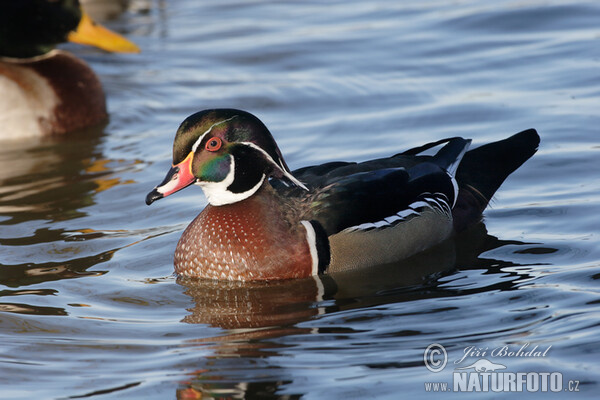The Enigmatic Wood Duck: Aix Sponsa
Share
The Wood Duck, scientifically known as Aix sponsa, is a strikingly beautiful bird that captivates birdwatchers and nature enthusiasts alike. This species, belonging to the family Anatidae, is renowned for its vibrant plumage and unique behaviors. In this article, we will explore the taxonomy, physical characteristics, habitat, diet, behavior, reproduction, and conservation status of the Wood Duck, providing a comprehensive overview of this remarkable bird.

Taxonomy
The Wood Duck is classified under the order Anseriformes, which includes all ducks, geese, and swans. Within this order, it falls under the family Anatidae, suborder Anseres, and subfamily Anatinae. The species was first described by Carl Linnaeus in 1758, and its type designation is Anas sponsa. The name "Wood Duck" is derived from its preference for wooded swamps and marshes, where it can often be found nesting.
Physical Characteristics
The Wood Duck is easily recognizable due to its striking coloration. Males exhibit iridescent green and purple plumage, with a distinctive red eye and a white throat patch. Their bodies are slender, and they possess a unique crest that adds to their charm. Females, while less colorful, are equally beautiful with their soft brown feathers and white eye-ring.

Habitat
Wood Ducks are primarily found in North America, with a range extending from British Columbia and southern Alberta down to California, and eastward to Nova Scotia. They prefer wooded swamps, marshes, and ponds, often nesting in tree cavities near water sources. Their adaptability allows them to thrive in both natural and urban environments, making them a common sight in parks and gardens.

Diet
The diet of the Wood Duck is diverse, consisting mainly of seeds, fruits, and aquatic plants. They are also known to consume insects and small invertebrates, particularly during the breeding season when protein is essential for raising their young. Their feeding habits often involve dabbling on the water's surface or foraging on land, showcasing their versatility.

Behavior
Wood Ducks are known for their unique behaviors, including their ability to perch on branches and their strong flying capabilities. They are social birds, often seen in small groups, and are known for their distinctive calls, which can be heard during courtship displays. Their flight is swift and agile, allowing them to navigate through dense forests with ease.

Reproduction
Breeding season for Wood Ducks typically occurs from late winter to early summer. Males engage in elaborate courtship displays to attract females, showcasing their vibrant plumage and performing aerial acrobatics. Nests are usually built in tree cavities, where females lay a clutch of 6 to 15 eggs. After hatching, the ducklings are precocial, meaning they are able to leave the nest shortly after birth and follow their mother to water.
Conservation Status
The Wood Duck has experienced fluctuations in population due to habitat loss and hunting pressures. However, conservation efforts, including habitat restoration and regulated hunting, have led to a rebound in their numbers. They are currently listed as a species of least concern, but ongoing monitoring and habitat protection remain essential to ensure their continued survival.
Observing Wood Ducks
For birdwatchers eager to observe Wood Ducks in their natural habitat, the best time to spot them is during the breeding season when males display their vibrant colors. Look for them near wooded wetlands, ponds, and lakes, especially during early morning or late afternoon. Binoculars and a good field guide can enhance the experience, allowing for a closer look at these stunning birds.
The Wood Duck, with its striking appearance and fascinating behaviors, is a true gem of North America's avian population. Its adaptability and resilience serve as a reminder of the importance of preserving natural habitats for future generations to enjoy. Whether you are a seasoned birdwatcher or a casual observer, the Wood Duck is sure to leave a lasting impression.